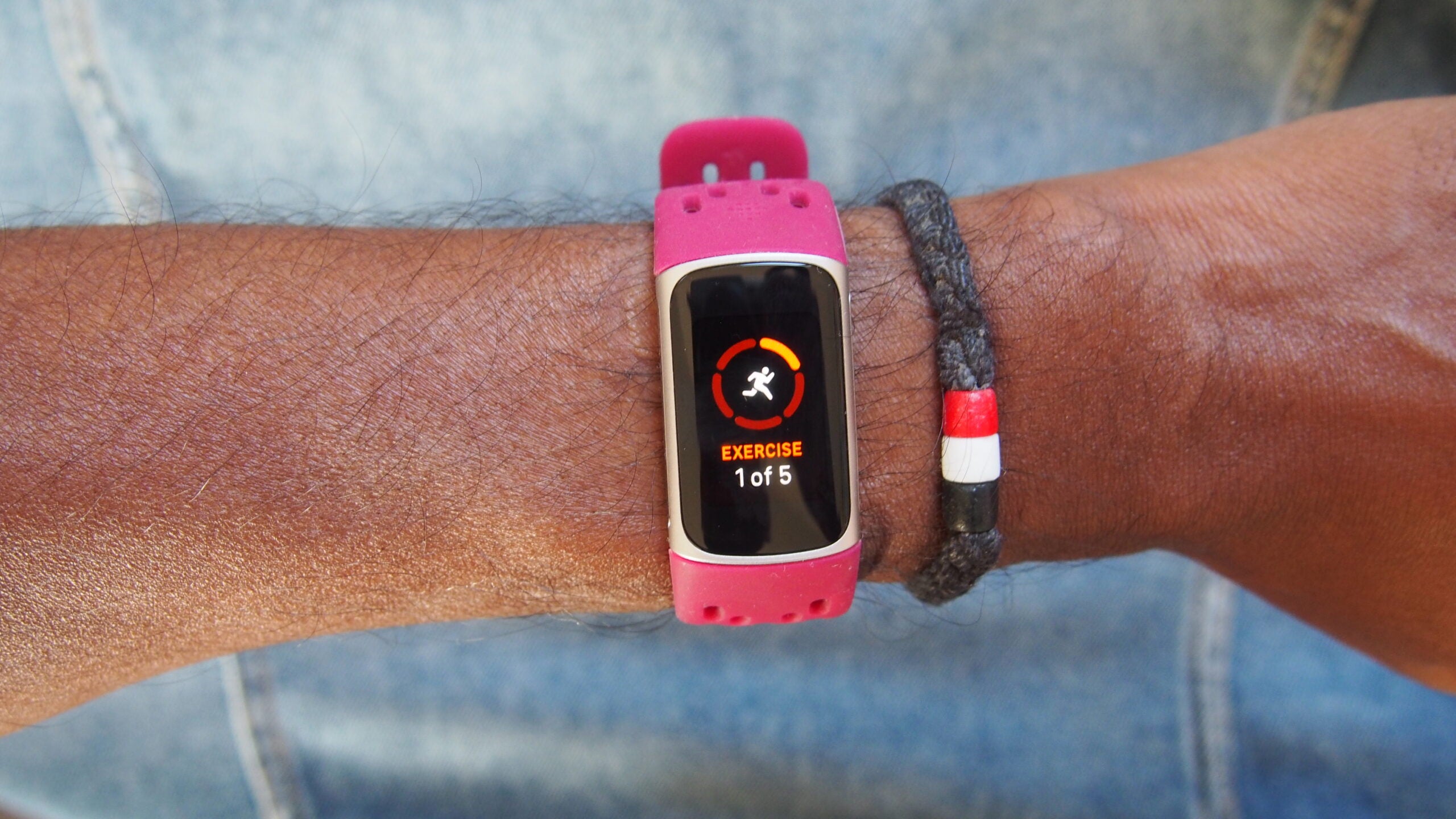Can Fitness Trackers Measure Blood Pressure?
We’ve all heard about fitness trackers – those high-tech gadgets that help you track your activity levels and stay in shape. What you might not know is that some fitness trackers can also measure your blood pressure. In this article, we’ll explore how fitness trackers measure blood pressure, the benefits of having a fitness tracker that can measure your blood pressure, and whether you should invest in one. So whether you’re looking to get a better understanding of your health, or just want to stay fit, this article has everything you need to know about how fitness trackers measure blood pressure.
List of Content
- 1. What are Fitness Trackers?
- 2. Can Fitness Trackers Actually Measure Blood Pressure?
- 3. Advantages and Disadvantages of Using Fitness Trackers to Monitor Blood Pressure
- 4. Factors to Consider When Choosing a Fitness Tracker for Blood Pressure Monitoring
- 5. Tips for Accurate Blood Pressure Measurements Using Fitness Trackers
- 6. Additional Resources for Monitoring Blood Pressure with Fitness Trackers
- My Awnswers to your Questions
1. What are Fitness Trackers?
Fitness trackers are electronic devices that track your physical activities. They are worn around the wrist, and can measure things like steps taken, heart rate, calories burned, sleep quality, and more.
How Do Fitness Trackers Work?
Each fitness tracker has different features. Some are more basic and measure only steps taken and heart rate. Others are more advanced and use a combination of an accelerometer, gyroscope, and GPS (Global Positioning System) to track your movements and activities. Through the installed app, you can look at the data collected by the device and track your fitness goals.
Benefits of Using Fitness Trackers
- Motivates you to exercise and move more.
- Helps you stay on track with your fitness goals.
- Tracks accurate results for daily physical activities.
- Monitors your sleep patterns.
- Enables you to switch between various training activities.
- Tracks daily goals and can even link to your smart phone.
Finding the Right Fitness Tracker for You
There are many brands and types of fitness trackers on the market, so make sure to do your research and read reviews. Depending on your needs, there are general trackers and sport-specific trackers. Consider features like battery life, GPS capabilities, water-resistance, and potential integration with other health apps like MyFitnessPal or Strava. Also take a look at available colors, straps, and the comfort of the tracker.

2. Can Fitness Trackers Actually Measure Blood Pressure?
The question of whether fitness trackers can actually measure blood pressure is a common one, and the answer is a little complicated. While it’s true that some fitness trackers do have the capability to measure and keep track of your blood pressure, it’s important to note that these devices come with their own limitations.
One thing to note is that the accuracy of fitness trackers when it comes to measuring your BP is often quite limited. This is because the technology used to measure it is often quite basic. The sensor in the device is likely not as precise as the one used by medical professionals, so it’s important to take this into account. It’s also important to keep in mind that the readings from a fitness tracker may not be consistent from day to day.
Another important factor to consider is the type of device you are using. While certain fitness trackers do have the capability to measure blood pressure, other types may not even have this feature. Be sure to check the specifications of your device before relying on it to track your blood pressure.
Advantages of Fitness Trackers to Measure Blood Pressure
- Allows you to easily track your BP readings over time
- Gives you an idea of how your BP changes depending on activity level or stress level
- May be a useful tool for monitoring long-term changes in your BP
Overall, it’s important to keep in mind that fitness trackers are not a substitute for a medical professional and should never be used as such. They can be a useful tool for tracking and monitoring your own blood pressure, but the accuracy and reliability may not be the same as that of a professional device.
3. Advantages and Disadvantages of Using Fitness Trackers to Monitor Blood Pressure
Fitness trackers have become commonplace these days, offering users the chance to monitor their health easily right from their wrists. With that said, they can also be used to monitor your blood pressure. Here are some of the advantages and disadvantages of using fitness trackers for this purpose:
Advantages:
- Ease of use: Fitness trackers are easy to use and give users a wealth of data at a glance. They give users the ability to check their blood pressure anytime, anywhere without having to attend a doctor’s visit.
- More information than a manual measurement: Many fitness trackers are equipped with advanced sensors that can measure systolic and diastolic blood pressure. This gives users a more precise measure of their overall health condition than a manual blood pressure check.
- Connectivity with other medical devices: Fitness trackers can be connected to other medical devices, such as a heart rate monitor, that can help you monitor your blood pressure more effectively.
Disadvantages:
- Accuracy: While fitness trackers have come leaps and bounds in terms of accuracy when compared to manual blood pressure checks, they are still not as accurate as a professional blood pressure reading.
- Battery life: Many fitness trackers need to be charged regularly, making it difficult to keep readings consistent.
- Higher cost: Fitness trackers are more expensive than manual blood pressure checks, which can add up over time.
Overall, fitness trackers can be a great way to monitor your blood pressure, but it is important to keep in mind their limitations.
More info on taking care of your health is available on many sites.
4. Factors to Consider When Choosing a Fitness Tracker for Blood Pressure Monitoring
Monitoring your blood pressure helps you be aware of potential health risks or conditions. A fitness tracker is a great way to stay on top of your BP readings, so here are four factors to consider when selecting one:
- Cost: Depending on your budget, you might need to opt for a basic fitness tracker with BP monitoring features or a higher-end device with more features and connectivity options.
- Tracking Accuracy: Make sure the device you choose is reliable and able to accurately track your BP readings.
- Comfort: Wearing an uncomfortable fitness tracker is not ideal, so make sure yours is comfortable to wear for long periods of time.
- Connectivity: Ensure that whatever fitness tracker you choose is compatible with your smartphone and other tech devices for easier sharing and analytics.
Once you’ve considered the factors above, it’ll be easier to choose the best fitness tracker for monitoring your blood pressure. Compare different options and read customer reviews to make the best decision.
Finally, keep in mind that a fitness tracker is designed to help you keep track of your blood pressure, but it should not take the place of regular doctor visits. Be sure to regularly check in with your health care provider to discuss your current health and any potential risks.
5. Tips for Accurate Blood Pressure Measurements Using Fitness Trackers
Correct Placement: To measure your blood pressure accurately using a fitness tracker, you’ll need to make sure that the device is correctly placed. The best placement is on your upper arm, slightly above the elbow. It should be snug but still loose enough so that there is some space between the band and your skin.
Warm Up: Your readings will also be more accurate if you take some time to warm up. Do some stretches or take a few minutes to walk around the house or office before measuring your BP. This will help your body adjust to the change in activity level and give a more accurate measurement.
Stay Calm: Stress and anxiety can elevate your heart rate and, in turn, your blood pressure. Try to relax and focus on your breathing before taking a measurement. This will help make sure that your readings aren’t skewed by external factors.
Choose the Right Place: It’s important to take your measurements in the same place and at the same time each day. This will make sure that your readings are consistent and that any changes are accurately recorded. The best places to measure your blood pressure are at your home, your office, and while at your doctor’s office.
- Make sure that the device is correctly placed.
- Take some time to warm up.
- Stay calm and focus on your breathing.
- Choose the right place to take your measurements.
6. Additional Resources for Monitoring Blood Pressure with Fitness Trackers
For those looking to monitor their blood pressure with fitness trackers, there are plenty of options on the market. The best devices will can give users accurate readings and provide incentives to help reach their fitness goals. Here’s a closer look at some of the additional resources available for blood pressure tracking.
Fitness Apps: There are many apps available that offer detailed tracking and graphs of your health progress. They can be used with fitness trackers to monitor blood pressure levels and give users a better understanding of their daily health statistics. Most apps also include features that make it easy to set daily goals and monthly progress.
Smartwatch Apps: Many of the latest smartwatch models come equipped with special apps that allow users to monitor their blood pressure. Through these apps, users can easily access their data from their wrist and track changes over time. This makes it easier for users to keep an eye on their health in real-time.
Online Support Groups: There are numerous online support groups available to those looking to track their health and monitor their blood pressure. Most of these groups provide members with advice on how to best use fitnees trackers and offer guidance on blood pressure levels. Additionally, some of these groups even offer specific programs to help users stick to their health goals and reach their objectives.
- Health Apps
- Smartwatch Apps
- Online Support Groups
These additional resources can be invaluable in helping users monitor their blood pressure with fitness trackers. With the right information and some extra help, tracking blood pressure with fitness trackers is easier than ever.
My Awnswers to your Questions
Q: Can fitness trackers measure blood pressure?
A: Some fitness trackers have the ability to measure blood pressure, though accuracy of the readings can vary and the results should not replace regular visits to a primary care doctor for tracking one’s blood pressure. There are a few fitness trackers on the market that have the technology to measure blood pressure, although they may require additional hardware such as a chest strap.
Q: How accurate are fitness trackers for measuring blood pressure?
A: The accuracy of fitness trackers for measuring blood pressure can depend on a variety of factors such as the type and brand of the fitness tracker, and the positioning of it on the user’s arm. Generally, most trackers that measure blood pressure will provide an estimated reading that may be within a few points of one’s actual blood pressure.
Q: Should I rely solely on my fitness tracker to measure my blood pressure?
A: No, it is important to visit a primary care doctor for medical checks and to check one’s blood pressure regularly in order to get a more accurate reading. Fitness trackers that measure blood pressure should not replace regular visits to the doctor, but they can be used to get a general idea of how one’s blood pressure changes over time.
All in all, fitness trackers have great potential to help you better manage your blood pressure. As technology advances, fitness trackers may very well develop the capability to measure blood pressure. Until then, make sure you follow your doctor’s advice and/or take regular trips to the doctor. Taking care of your blood pressure isn’t something to take lightly, so take all the necessary steps to keep your health in check.

